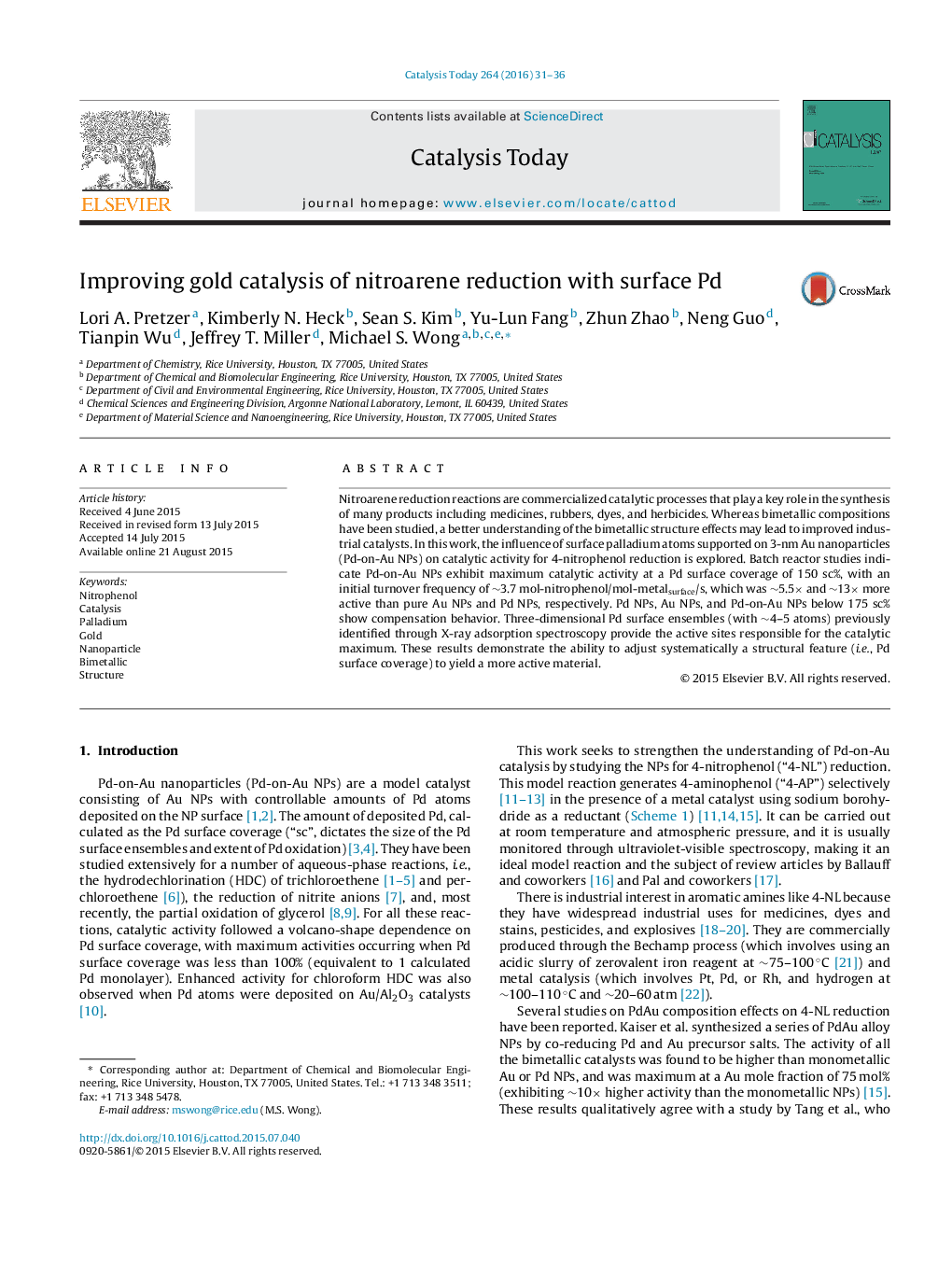| Article ID | Journal | Published Year | Pages | File Type |
|---|---|---|---|---|
| 53293 | Catalysis Today | 2016 | 6 Pages |
Nitroarene reduction reactions are commercialized catalytic processes that play a key role in the synthesis of many products including medicines, rubbers, dyes, and herbicides. Whereas bimetallic compositions have been studied, a better understanding of the bimetallic structure effects may lead to improved industrial catalysts. In this work, the influence of surface palladium atoms supported on 3-nm Au nanoparticles (Pd-on-Au NPs) on catalytic activity for 4-nitrophenol reduction is explored. Batch reactor studies indicate Pd-on-Au NPs exhibit maximum catalytic activity at a Pd surface coverage of 150 sc%, with an initial turnover frequency of ∼3.7 mol-nitrophenol/mol-metalsurface/s, which was ∼5.5× and ∼13× more active than pure Au NPs and Pd NPs, respectively. Pd NPs, Au NPs, and Pd-on-Au NPs below 175 sc% show compensation behavior. Three-dimensional Pd surface ensembles (with ∼4–5 atoms) previously identified through X-ray adsorption spectroscopy provide the active sites responsible for the catalytic maximum. These results demonstrate the ability to adjust systematically a structural feature (i.e., Pd surface coverage) to yield a more active material.
Graphical abstractFigure optionsDownload full-size imageDownload high-quality image (135 K)Download as PowerPoint slide
